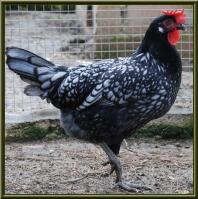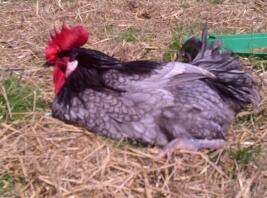Andalusian Chickens


Breed Rating (3 Reviews)
| Appearance | |
| Friendliness | |
| Hardiness | |
| Egg | |
| Garden |
Andalusian History
Andalusian Behaviour
Andalusian Varieties
Andalusian Pictures














Andalusian For Sale
Latest Reviews For Andalusian (3 of 3)
Very pretty, but wasn't a match for us. - Dixie,
We had 5 Blue Andalusian hens and one roo. The hens were decent layers, and despite their reputation as a non-setter, one hen managed to not only clutch 15 chicks, (she hid her nest), but raised them to about 3 months old, when a predator took out the lot of them (we think it was racoons). The hens were very good at foraging, but we found them to be rather nervous, almost wild in their behavior. They frequently refused to head to the barn at night, instead roosting up in the trees. The rooster was gorgeous, but quite aggressive. We had to watch out for children and adults alike around this bird. He met his end after spurring my husband through his heavy jeans. Not great for those looking for a mellow-temperament breed, but they were definitely thrifty, and if you happen to get the odd maternal hen, they are amazingly good broodies.
Your information is not 100% accurate - Sian,
Firstly, the breed was created in Britain from Spanish stock. Secondly, to get 100% blue you can either breed a black cock to white hen or reverse. However, this will result in the washed out blue of hatchery birds. The only way to get good color is to breed blue to blue. Thanks!
Best Egg Layer I have - Karen,
These are great birds for large white eggs very easy to keep. But they do like to sleep in trees what ever the weather. So if your thinking of these for the garden you will have to clip their wings. The Males can be a little sharp but the hens are great. there great forages and eat very little so very cost effective to have. I would never be with out them now for eggs and they don't go broody even better.







